
Nikolaus Barbie was a German officer of the SS and SD who worked in Vichy France during World War II. He became known as the "Butcher of Lyon" for having personally tortured prisoners—primarily Jews and members of the French Resistance—as the head of the Gestapo in Lyon. After the war, United States intelligence services employed him for his anti-communist efforts and aided his escape to Bolivia, where he advised the dictatorial regime on how to repress opposition through torture. In 1983, the United States apologised to France for the U.S. Counterintelligence Corps helping him escape to Bolivia, aiding Barbie's escape from an outstanding arrest warrant.
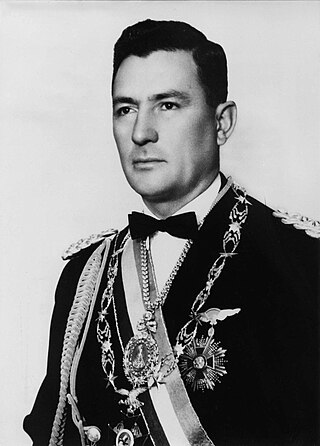
René Barrientos Ortuño was a Bolivian military officer and politician who served as the 47th president of Bolivia twice nonconsecutively from 1964 to 1966 and from 1966 to 1969. During much of his first term, he shared power as co-president with Alfredo Ovando from 1965 to 1966 and prior to that served as the 30th vice president of Bolivia in 1964.

Haydée Tamara Bunke Bider was an Argentine-born East German revolutionary known for her involvement in feminism, leftist politics, and liberation movements.
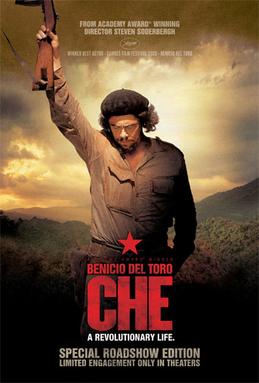
Che is a two-part 2008 biographical film about Argentine Marxist revolutionary Ernesto "Che" Guevara, directed by Steven Soderbergh. Rather than follow a standard chronological order, the films offer an oblique series of interspersed moments along the overall timeline. Part One is titled The Argentine and focuses on the Cuban Revolution from the landing of Fidel Castro, Guevara, and other revolutionaries in Cuba to their successful toppling of Fulgencio Batista's dictatorship two years later. Part Two is titled Guerrilla and focuses on Guevara's attempt to bring revolution to Bolivia and his demise. Both parts are shot in a cinéma vérité style, but each has different approaches to linear narrative, camerawork and the visual look. It stars Benicio del Toro as Guevara, with an ensemble cast that includes Demián Bichir, Rodrigo Santoro, Santiago Cabrera, Franka Potente, Julia Ormond, Vladimir Cruz, Marc-André Grondin, Lou Diamond Phillips, Joaquim de Almeida, Édgar Ramírez, Yul Vazquez, Unax Ugalde, Alfredo De Quesada, and Oscar Isaac.
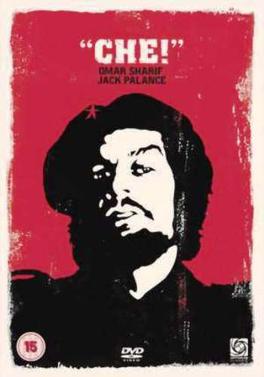
Che! is a 1969 American biographical film directed by Richard Fleischer and starring Omar Sharif as Marxist revolutionary Ernesto "Che" Guevara. It follows Guevara from when he first landed in Cuba in 1956 to his death in Bolivia in 1967, although the film does not portray the formative pre-Cuban revolution sections of Che's life as described in the autobiographical book The Motorcycle Diaries (1993).

Paco Ignacio Taibo II, also known as Paco Taibo II or informally as PIT is a Spanish-Mexican writer, novelist and political activist based in Mexico City. He is most widely known as the founder of the neopolicial genre of novel in Latin America and is also a prominent member of the international crime writing community. His Spanish language work has won numerous awards including two Latin American Dashiell Hammett Prizes. In 2018, Taibo was appointed as head of the Fondo de Cultura Económica by President Andrés Manuel López Obrador.
Appearances of Argentine Marxist revolutionary Che Guevara (1928–1967) in popular culture are common throughout the world. Although during his lifetime he was a highly politicized and controversial figure, in death his stylized image has been transformed into a worldwide emblem for an array of causes, representing a complex mesh of sometimes conflicting narratives. Che Guevara's image is viewed as everything from an inspirational icon of revolution, to a retro and vintage logo. Most commonly he is represented by a facial caricature originally by Irish artist Jim Fitzpatrick and based on Alberto Korda's famous 1960 photograph titled Guerrillero Heroico. The evocative simulacra abbreviation of the photographic portrait allowed for easy reproduction and instant recognizability across various uses. For many around the world, Che has become a generic symbol of the underdog, the idealist, the iconoclast, or the martyr. He has become, as author Michael Casey notes in Che's Afterlife: The Legacy of an Image, "the quintessential postmodern icon signifying anything to anyone and everything to everyone."
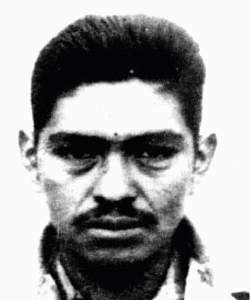
Simeón Cuba Sarabia, also known as Willy, was a member of the Ñancahuazú guerrilla column led by Che Guevara in Bolivia. Born in the Cochabamba region of Bolivia, he became a leader among tin miners in Huanuni and served as the secretary of organization and secretary of militias of the local mine workers' union. He also carried out various social service activities for the benefit of the miners' families. Cuba Sarabia joined the Communist Party of Bolivia (PCB) but resigned from it in 1965 to become a member of the Bolivian Marxist–Leninist Party which favored armed struggle. When he urged that group to put its principles into practice, he was expelled from it along with Moisés Guevara. It was Moisés Guevara who brought him into Che Guevara's Ñancahuazú guerrilla group in March 1967.
Peter de Kock is a Dutch cameraman, film producer and director. He studied at the Film academy in Amsterdam and worked as a director of photography on many films and documentaries. De Kock made his directorial debut with the film The Hands of Che Guevara, a documentary about the severed hands of the Latin American guerrilla fighter Ernesto Che Guevara that were put in a jar of formaldehyde and disappeared from public view. The film was a success at many international film festivals.

Harry "Pombo" Villegas was a Cuban communist guerrilla. He was born in Yara and was a descendant of African slaves. He fought alongside Che Guevara in battles from the Sierra Maestra to the Bolivian insurgency. From 1977 to 1979, and again from 1981 to 1988, Villegas was part of the leadership of Cuba's volunteer military mission in Angola, fighting alongside Angolan and Namibian forces against aggression by South Africa's apartheid regime. Villegas was a Central Committee member of the Communist Party of Cuba from 1997 to 2011, a deputy of Cuba's National Assembly, and executive vice president of the Association of Combatants of the Cuban Revolution.

Ernesto "Che" Guevara was an Argentine Marxist revolutionary, physician, author, guerrilla leader, diplomat, and military theorist. A major figure of the Cuban Revolution, his stylized visage has become a ubiquitous countercultural symbol of rebellion and global insignia in popular culture.
Ernesto "Che" Guevara, was an Argentine Marxist revolutionary, politician, author, intellectual, physician, military theorist, and guerrilla leader. His life, legacy, and ideas have attracted a great deal of interest from historians, artists, film makers, musicians, and biographers. In reference to the abundance of material, Nobel Prize–winning author Gabriel García Márquez has declared that "it would take a thousand years and a million pages to write Che's biography."
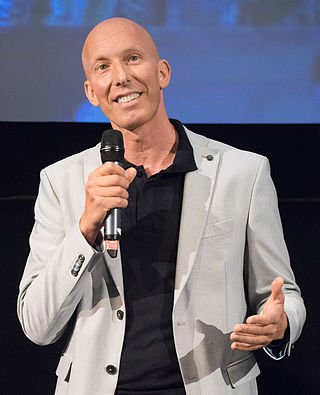
Erik Walter Gandini is an Italian-Swedish film director, writer, producer and professor of documentary film at Stockholm University of the Arts.
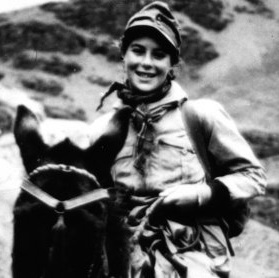
Monika Ertl was a German-Bolivian communist militant and guerrilla fighter and the daughter of Nazi propagandist Hans Ertl. She is most known for assassinating Colonel Roberto Quintanilla Pereira, the man responsible for chopping off Che Guevara's hands. This successful assassination earned her the title 'Che Guevara's avenger' in Germany. She continued to serve as a soldier in the National Liberation Army (ELN) resisting the Bolivian government, until she was killed by Bolivian security services in 1973. Her body was never returned to her family, and the site of her grave remains unknown.

Che Rise and Fall is a documentary film created by Eduardo Montes-Bradley. The film was entirely shot in Cuba at the time Che Guevara’s remains was airlifted from Bolivia to Santa Clara the final resting place. The documentary features the testimonies of Guevara’s comrades-in-arms in Sierra Maestra, Congo and Bolivia, also with Alberto Granado with whom Guevara rode a motorcycle from Argentina on a trip that will end 16 years later in the jungles of Bolivia, an experience that was brought to the big screen on The Motorcycle Diaries. Che Rise and Fall begins with an account of Guevara's death in Bolivia in 1967 and fittingly ends with footage of the return of his remains for interment in a monument in Santa Clara's Revolution Square some 30 years later.

Guerrillero Heroico is an iconic photograph of Marxist revolutionary Che Guevara taken by Alberto Korda. It was captured on March 5, 1960, in Havana, Cuba, at a memorial service for victims of the La Coubre explosion. By the end of the 1960s, the image, in conjunction with Guevara's subsequent actions and eventual execution, helped solidify the leader as a cultural icon. Korda has said that at the moment he shot the picture, he was drawn to Guevara's facial expression, which showed "absolute implacability" as well as anger and pain. Years later, Korda would say that the photograph showed Che's firm and stoical character. Guevara was 31 years old at the time the photograph was taken.

The Ñancahuazú Guerrilla or Ejército de Liberación Nacional de Bolivia was a group of mainly Bolivian and Cuban guerrillas led by the guerrilla leader Che Guevara which was active in the Cordillera Province of Bolivia from 1966 to 1967. The group established its base camp on a farm across the Ñancahuazú River, a seasonal tributary of the Rio Grande, 250 kilometers southwest of the city of Santa Cruz de la Sierra. The guerrillas intended to work as a foco, a point of armed resistance to be used as a first step to overthrow the Bolivian government and create a socialist state. The guerrillas defeated several Bolivian patrols before they were beaten and Guevara was captured and executed. Only five guerrillas managed to survive, including Harry Villegas, and fled to Chile.
Enrique Oltuski Osacki was a Cuban government minister who participated in the Cuban Revolution.
Chevolution is a 2008 documentary film which examines the history and legacy of the photo Guerrillero Heroico taken by famous Cuban photographer Alberto Díaz Gutiérrez. This image has thrived for the decades since Che Guevara's death and has evolved into an iconic image, which represents a multitude of ideals. The documentary explores the story of how the photo came to be, its adoption of multiple interpretations and meanings, as well as the commercialization of the image of Ernesto "Che" Guevara.
Osvaldo Peredo Leigue was a physician and a Bolivian revolutionary leader. He lived in Santa Cruz de la Sierra, Bolivia, where he was an alderman on the Municipal Council of Santa Cruz de la Sierra.














